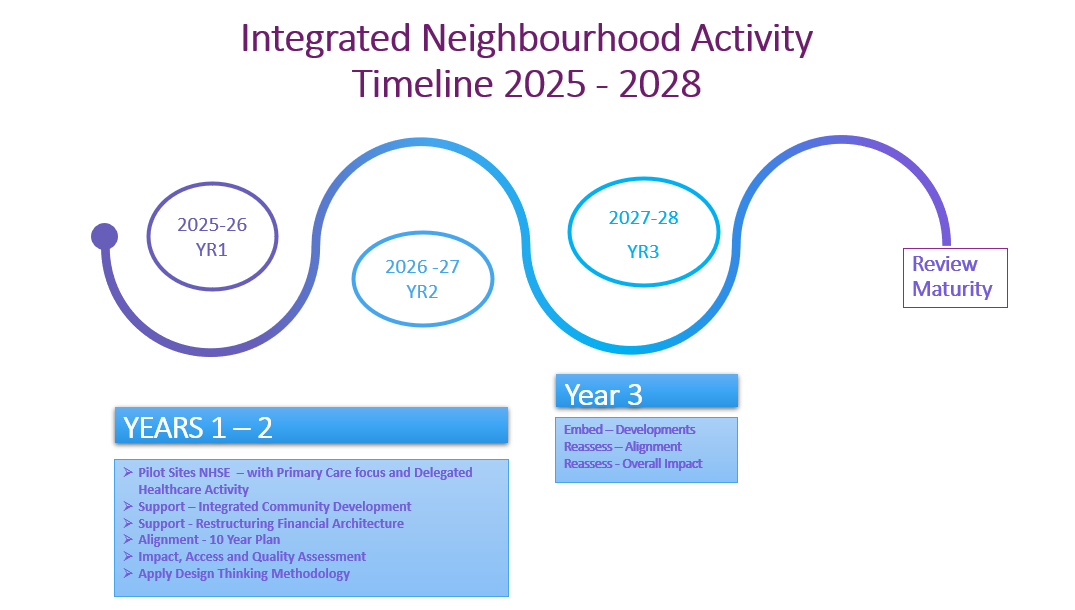The adoption of ‘System Thinking’ analysis allowed us to explore the main areas where integration prominently occurs within our footprint. It also clarified that by embracing matrix working we can:
- Collaborate between departments
- Be united and agile
- Effectively communicate between departments
- Create resource efficiency
- New Skills development – learn from each other
We were researching the ‘Root Definition’ for the discovery phase.
- What we are going to do?
- How are we going to do it?
- Why are we going to do it?
We discovered through this process that the community base was our principal area of activity for integration. Inter-related working relationships form and to support growth is our ‘purposeful activity’ needed to help progress the development of the workforce to support the ‘Hospital to Community’ shift.
The Purposeful Activity
- WHAT: Support integrated approaches through cultural change, by understanding the H&SC landscape and the people it affects.
- HOW: By understanding the H&SC landscape and the people who it affects and involving them in the programme development.
- WHY: To ‘Connect the Unconnected’ to support improving people lives within our communities and bringing change to the eco-system of health and care

Discovery Route 2024 - 2025
Q1
Milestone 1:
- Mandate to pursue Discovery Phase by Executive Lead informed by legacy learning
Q2
Milestone 2:
- Legislation – CG Integration Agenda
- Forming Intelligence & Focus Groups
- Evidence Gathering/Group Discussion
- QSIR
- Cultural Shift
Q3
Milestone 3:
- QSIR Analysis
- SRO Assignment - Governance
- Partnership and Board Formation
Q4
Milestone 4:
- Completion of Roadmaps
- 1-3 Yrs Plans set for Delivery
